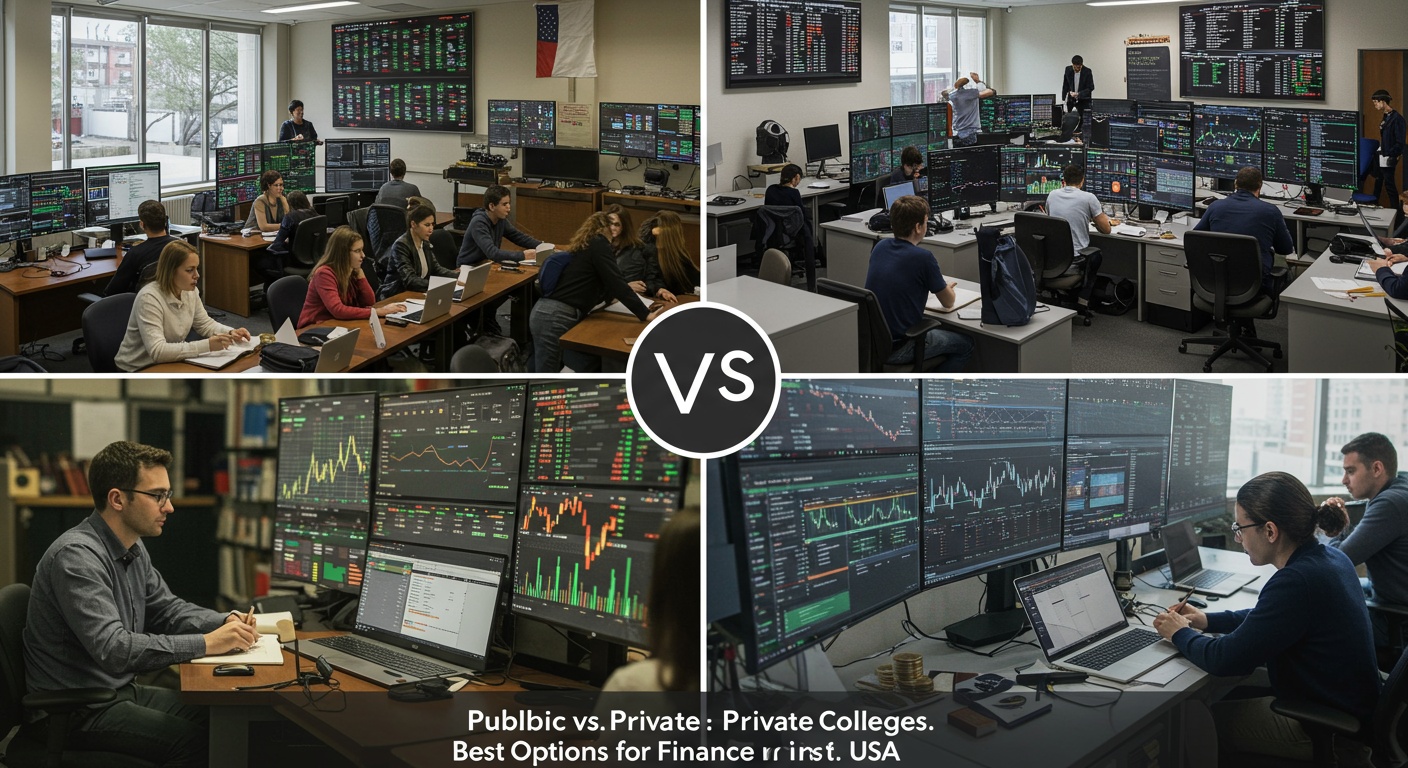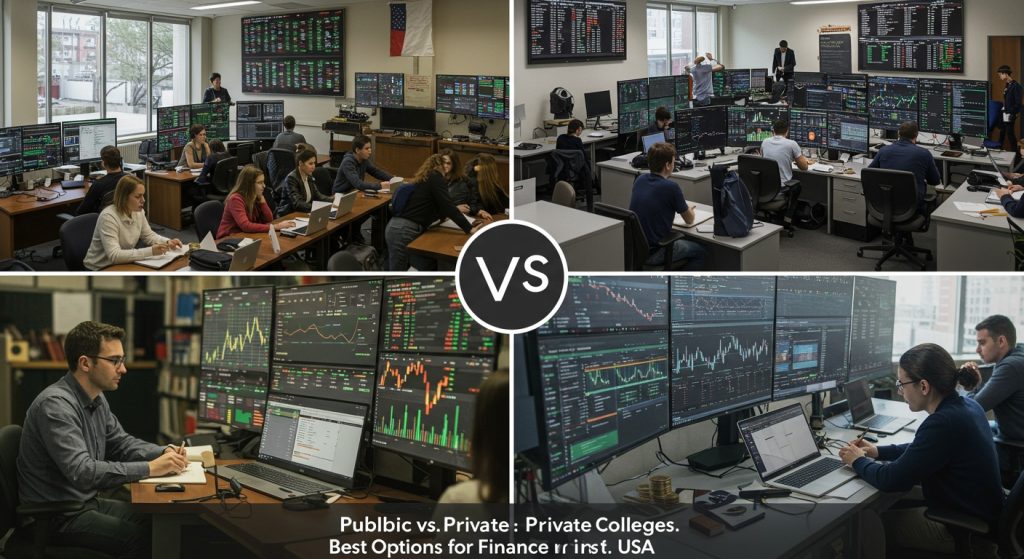The choice between public and private colleges in the USA represents a pivotal financial decision for students and families, especially given the rising cost of education. We’ll explore this critical comparison by focusing on key criteria like tuition fees, financial aid availability. Potential return on investment. Expect a detailed evaluation of factors influencing affordability, including merit-based scholarships, need-based grants. Loan options at both types of institutions. Our analysis will highlight the distinct financial landscapes of public versus private colleges, providing a clear framework for informed decision-making regarding higher education investments.

Understanding the Core Difference: Public vs. Private
Choosing between a public and private college in the USA is a pivotal decision, especially when considering your personal finance. The fundamental difference lies in their funding sources and governance. Public colleges and universities receive substantial funding from state governments, which translates to lower tuition rates for in-state residents. Private institutions, on the other hand, rely heavily on endowments, tuition fees. Private donations, allowing them greater autonomy and often leading to higher tuition costs.
Tuition and Fees: The Bottom Line
The most immediate and apparent difference between public and private colleges is the cost of attendance. Let’s break down the common fee structures:
- Public Colleges: These institutions typically have a tiered tuition system. In-state students benefit from significantly lower tuition rates, often subsidized by state taxes. Out-of-state students pay higher tuition, although it’s usually still less than private college tuition.
- Private Colleges: Private colleges and universities generally have a uniform tuition rate for all students, regardless of their state of residency. This rate is typically higher than the out-of-state tuition at public universities.
It’s crucial to interpret that tuition is just one component of the overall cost. Room and board, books, fees. Personal expenses also contribute significantly. Be sure to calculate the total cost of attendance at each institution you’re considering.
Financial Aid: Leveling the Playing Field
While private colleges often have higher sticker prices, they also tend to offer more generous financial aid packages. This is largely due to their larger endowments, which allow them to provide need-based and merit-based scholarships. Public colleges, particularly those in states with budget constraints, may have less financial aid to distribute.
Key Considerations for Financial Aid:
- Need-Based Aid: Both public and private colleges offer need-based aid, determined by your family’s income and assets as reported on the Free Application for Federal Student Aid (FAFSA).
- Merit-Based Aid: Some institutions offer scholarships based on academic achievement, athletic ability, or other talents. Private colleges often have more merit-based aid opportunities.
- Grants vs. Loans: Grants are essentially free money, while loans must be repaid. Prioritize schools that offer a higher proportion of grants in their financial aid packages.
- Net Price Calculator: Use the net price calculator on each college’s website to estimate your out-of-pocket cost after financial aid.
Prestige vs. Practicality: Weighing the Intangibles
The perceived prestige of a private college can be a significant draw for some students. Elite private institutions often boast smaller class sizes, more personalized attention from professors. Extensive alumni networks. But, a degree from a reputable public university can be just as valuable, particularly in fields like engineering, nursing. Education.
Consider your career goals: If you’re pursuing a career that requires specialized training or licensure, the reputation of your program may be more crucial than the overall prestige of the institution. For example, a highly ranked public engineering school might be a better choice than a less-regarded private college, even if the private college has a slightly higher overall ranking.
Real-World Examples: Students Making Smart Choices
Let’s look at a couple of scenarios to illustrate how students navigate the public vs. Private college decision.
- Scenario 1: Maria, a high-achieving student from California, is accepted to both UCLA (a top public university) and Stanford (a prestigious private university). UCLA’s in-state tuition is significantly lower. Stanford offers Maria a generous financial aid package that brings her out-of-pocket cost closer to UCLA’s. Maria ultimately chooses Stanford because she values the smaller class sizes and research opportunities.
- Scenario 2: David, an aspiring engineer from Texas, is accepted to the University of Texas at Austin (a leading public engineering school) and a smaller private college with a less established engineering program. Despite the higher tuition at the private college, David chooses UT Austin because of its strong reputation in engineering and its extensive industry connections.
Long-Term Financial Implications: Beyond Graduation
The choice between a public and private college can have lasting effects on your finance after graduation. Higher student loan debt can impact your ability to save for retirement, buy a home, or pursue other financial goals.
Factors to Consider:
- Student Loan Debt: Compare the average student loan debt of graduates from different institutions. Websites like College Scorecard provide this data.
- Salary Expectations: Research the average starting salaries for graduates in your chosen field. A higher-paying job can help you pay off your student loans more quickly.
- Return on Investment (ROI): Calculate the potential ROI of your education by comparing the cost of attendance to your expected future earnings.
It’s vital to remember that the “best” option depends on your individual circumstances, financial situation. Career aspirations. There’s no one-size-fits-all answer.
Scholarship Strategies: Maximizing Your Opportunities
Regardless of whether you choose a public or private college, actively pursuing scholarships is a crucial part of managing your finance. Here’s a strategy to maximize your chances:
- Start Early: Begin your scholarship search as early as your junior year of high school.
- Utilize Online Resources: Websites like Scholarships. Com, Fastweb. College Board’s BigFuture offer extensive scholarship databases.
- Targeted Searches: Look for scholarships specific to your major, ethnicity, gender, or geographic location.
- Local Scholarships: Don’t overlook local scholarships offered by community organizations, businesses. Religious groups.
- Craft a Compelling Application: Pay attention to the application requirements and write a thoughtful, well-written essay. Proofread carefully!
The Role of State Residency: A Significant Factor
State residency is a major determinant in the affordability of public colleges. Establishing residency often requires living in the state for a specific period (usually one year) and demonstrating intent to make the state your permanent home. This can involve registering to vote, obtaining a driver’s license. Paying state taxes.
vital Note: Residency requirements can be complex and vary from state to state. Consult the admissions office of the public colleges you’re considering to comprehend the specific rules and regulations.
Conclusion
Choosing between public and private colleges for finance in the USA isn’t just about sticker price; it’s about long-term investment in your future. We’ve explored how public schools often offer lower tuition, especially for in-state students, while private institutions may provide more generous financial aid packages and specialized programs. Think of it like this: public colleges are often the reliable sedan, consistently getting you where you need to go, while private colleges can be the high-performance sports car, offering a potentially faster, more customized route but requiring a larger initial investment. The key to success here is diligent research and a clear understanding of your own financial situation and career goals. Don’t be afraid to negotiate financial aid packages – colleges often have room to maneuver. Consider not just the immediate cost. Also the potential return on investment in terms of career prospects and salary potential. Ultimately, the “best” option is the one that aligns with your unique circumstances and empowers you to achieve your financial and professional aspirations. Remember, a well-planned education, regardless of its setting, is a powerful catalyst for success.
More Articles
Master’s in Finance: Top Universities in France for Investment Banking
Top Universities in Germany for Master’s in Data Science
Top Universities Offering Master’s in Business Management in Canada
Application Deadlines and Admission Requirements for Top Colleges in France
FAQs
Okay, so public vs. Private college… Which one’s generally easier on the wallet?
Generally speaking, public colleges are less expensive, especially if you’re a resident of that state. Think in-state tuition. Private colleges tend to have a higher sticker price. Don’t let that scare you just yet – more on financial aid later!
I keep hearing about ‘sticker price’ vs. What people actually pay. What’s the deal?
Great question! The ‘sticker price’ is the published tuition and fees. What you actually pay depends on financial aid, scholarships. Grants. Private colleges often have larger endowments, meaning they can sometimes offer more generous financial aid packages to make the net cost competitive with, or even lower than, a public school.
So, financial aid… Is it the same for public and private schools?
Not exactly. Both use the FAFSA (Free Application for Federal Student Aid) to determine your eligibility for federal aid. But, private schools often have their own institutional aid applications (like the CSS Profile) that dive deeper into your family’s financial situation. They often have more money to give out in the form of grants and scholarships, so it’s worth applying even if the sticker price seems intimidating.
What about scholarships? Does it matter if I go public or private when applying for those?
Scholarships are fantastic. They’re out there for everyone! Your eligibility usually depends on your academic record, extracurricular activities. Sometimes your background. The type of school you attend generally doesn’t directly impact your ability to apply for scholarships. Some scholarships might be specifically for students attending certain types of institutions (e. G. , a scholarship for STEM students at a state university). Do your research!
Is it ALWAYS cheaper to go to a public school in my state?
Almost always. Not guaranteed! Consider the whole package. A private school might offer you a massive grant that makes it cheaper than your in-state public option after financial aid. Run the numbers for both types of schools before making a decision.
I’m worried about taking out a ton of student loans. Any advice on minimizing debt, regardless of which type of school I choose?
Definitely! Prioritize scholarships and grants above all else – they’re free money! Consider living at home for a year or two to save on room and board. Community college for your first couple of years is another excellent way to cut costs before transferring to a four-year university. Look into work-study programs too. And don’t be afraid to negotiate your financial aid package with the colleges – sometimes they can offer more!
What about the long-term value? Does the type of school affect my earning potential after graduation?
That’s a tough one. There’s no simple answer. While some private schools have strong alumni networks and prestigious reputations that might lead to higher earning potential, your major, work ethic. Networking skills are much bigger factors. A motivated graduate from a public university can be just as successful, if not more so, than someone from a fancy private school. Focus on getting a valuable education and developing marketable skills, regardless of where you go.



